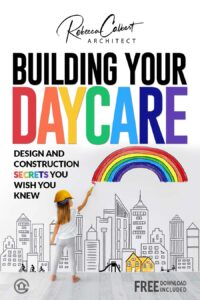Have you ever stopped to think about how the design of childcare centers can vary greatly depending on whether they are located in rural or urban settings? The environments in which young children grow, learn, and play are so crucial, and the layout and structure of these spaces can greatly influence a child’s development. Not only are there physical differences, but there are also differences in philosophies, resource allocation, and community involvement.
Understanding the Basics
Designing a childcare center is much more than selecting a site and constructing a building. It involves a comprehensive understanding of children’s needs and how they interact with their environments. Considerations include safety, space efficiency, aesthetic elements, and how all these factors contribute to learning and development.
The Importance of Environment in Child Development
Your little ones spend a significant portion of their early years in childcare environments. These spaces play a pivotal role in shaping their cognitive abilities, social skills, and emotional health. The design of these centers must both stimulate and nurture, offering a balance between education and exploration.
Breaking Down Rural vs. Urban Childcare Centers
Embarking on a journey through the differences in childcare center designs, you’ll find that there’s no one-size-fits-all approach. You’ll see how rural and urban spaces each bring unique challenges and opportunities.
Space and Size: More Than Just Square Footage
In rural areas, space is often more abundant and less expensive. This allows childcare centers to feature larger outdoor play areas, possibly including natural landscapes which can be integrated into play and learning activities. Conversely, urban centers often grapple with limited and expensive real estate, leading to more compact designs.
Indoor vs. Outdoor Spaces
In rural settings, you’re more likely to come across expansive outdoor areas, where nature becomes a critical component of the learning experience. For kids, this could mean anything from a small garden to a mini forest. In contrast, urban centers may compensate their lack of space with rooftop playgrounds or highly organized, multi-functional indoor play areas.
Resource Availability and Accessibility
One of the significant design considerations between rural and urban centers lies in resource distribution. Urban centers generally have easier access to a variety of educational resources, including specialized staff and cutting-edge learning tools. On the flip side, the proximity to resources in rural areas could be challenging, though technology and transportation improvements are slowly bridging the gap.
Philosophies and Educational Approaches
The differences in design aren’t just about physical spaces, but also the educational philosophies that underpin these environments. It’s fascinating to notice how these philosophies influence the way spaces are utilized and structured.
Traditional vs. Modern Approaches
While some rural centers might subscribe to more traditional approaches due to community preferences or resource limitations, urban centers, usually with more exposure and influence from diverse educational trends, may incorporate more modern, experimental methods.
Community and Family Involvement
In rural settings, the community’s involvement often forms a backbone to the childcare ecosystem. You’ll notice how these centers function as a hub for families, with interactions extending beyond the center. Urban centers, meanwhile, might foster a more structured, less personalized interaction due to the fast-paced lifestyle.
Safety Standards and Regulations
Whether rural or urban, safety in childcare centers is non-negotiable. However, the implementation of safety standards and regulations showcases some differences based on geography.
Compliance with Standards
Generally, urban centers may have more stringent safety regulations to adhere to, due in part to the density of buildings and people. In rural areas, communities sometimes have a bit more leeway to adapt norms to fit local needs and contexts, but this often comes with the need for rigorous self-regulation.
Emergency Preparedness
Emergency preparedness can look different based on location. Urban centers might focus on disaster preparedness related to infrastructure, such as earthquakes or fires in high-rise buildings. On the other hand, rural centers might prioritize emergency responses to natural events like storms or wildlife encounters.
Designing for Diversity and Inclusion
The cultural, ethnic, and socioeconomic diversity can widely differ between rural and urban settings and can significantly influence the design of childcare centers.
Urban Diversity
Urban centers typically serve a more diverse population. Thus, their design might reflect a range of cultural backgrounds, languages, and special needs, requiring flexible spaces that foster inclusivity.
Rural Homogeneity
In contrast, rural centers might cater to more homogeneous communities. While this can streamline some aspects of design, it can also pose challenges in ensuring exposure to diverse experiences and worldviews.
Innovations and Future Directions
We’re seeing fascinating trends emerge in both rural and urban childcare settings influenced by technology, sustainable practices, and evolving pedagogies.
Eco-Friendly and Sustainable Designs
Sustainability is gaining traction across the board. In rural areas, childcare centers might integrate solar panels or use local materials, while urban centers may focus on energy-efficient designs and green rooftops.
Technological Integration
Urban centers often lead the way regarding technological integration into educational strategies, from interactive whiteboards to online parents’ portals. Nonetheless, rural centers are catching up, using technology to overcome geographic barriers.
Flexible and Adaptive Spaces
The future of childcare design is heavily leaning toward spaces that can morph and adapt. Whether in a rural or urban setting, creating environments that can switch functions as per need serves to maximize use and inspire creativity.
Conclusion
While the design of rural and urban childcare centers exhibits a myriad of differences, the underlying goal remains the same: to create a safe, nurturing, and stimulating environment that promotes the holistic development of children. By understanding these distinctions, you can appreciate the thoughtful considerations that go into crafting these essential spaces. Maybe you’ll see the daycare down the street, whether it be in the heart of a city or surrounded by fields, in a whole new light.
In the end, the most crucial aspect is prioritizing the well-being and development of the children, while fostering environments that respect and adapt to the unique challenges and opportunities of their settings. The adventure of learning is as much about discovering the world around you as it is about understanding oneself—and it all starts in those delightful, dynamic early years.

